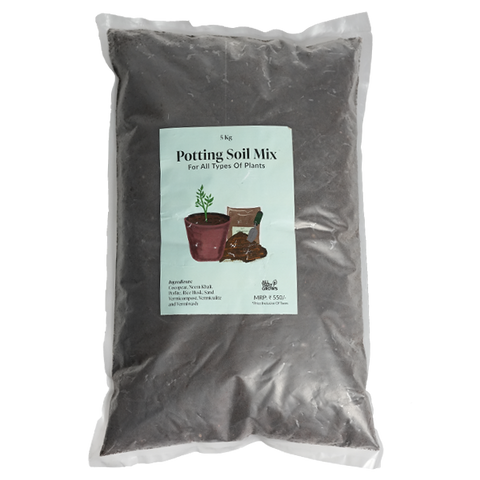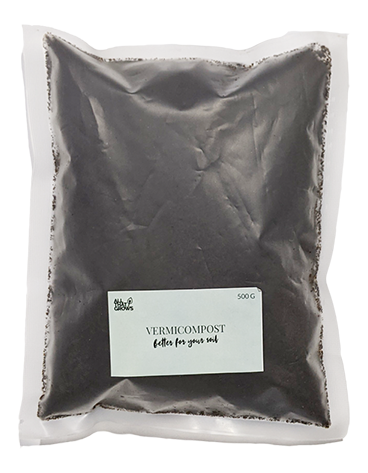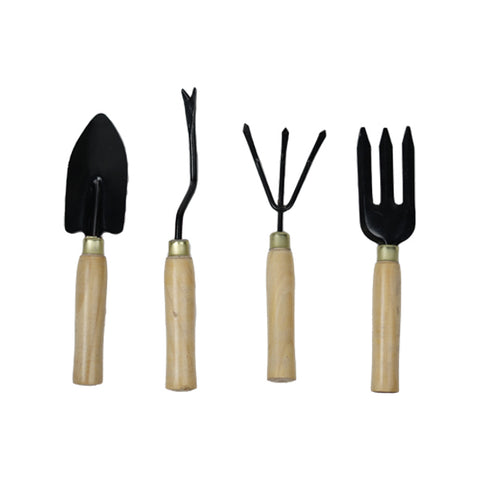Butternut squash (Cucurbita moschata) is a sweet and nutty-flavoured winter squash, cherished for its versatility in both savoury and sweet dishes. Native to Central and South America, this squash is a member of the Cucurbitaceae family and is known for its distinctive pear-shaped appearance. Packed with nutrients like vitamins A and C, butternut squash is an excellent choice for any home garden.
Ideal Growing Conditions for Butternut Squash

Planting Months in India
The best time to plant butternut squash in India is from September to November, ensuring that the plants grow in cooler temperatures as they thrive during winter.
Light
Butternut squash requires full sunlight, with at least 6-8 hours of direct sunlight daily, to produce healthy fruit.
Potting Soil
Well-draining, nutrient-rich soil with a slightly acidic to neutral pH (6.0-7.0) is ideal. Adding compost or aged manure helps improve soil fertility.
Plant Distance
Space each plant about 90-120 cm apart to allow adequate room for the vines to spread and avoid overcrowding.
Water
Maintain consistent moisture levels, watering deeply once or twice a week. Avoid waterlogging, as it can lead to root rot.
Fertilisers
Use an organic, well-balanced fertiliser with nitrogen for foliage growth and phosphorus and potassium for fruit development. Fertilise every 3-4 weeks during the growing season.
Humidity and Temperature
Butternut squash grows best in moderate humidity with temperatures between 18-24°C. Protect young plants from frost by covering them during cold nights.
Growing Butternut Squash from Seeds at Home

Growing butternut squash from seeds is no different than growing squash or pumpkin in the summer season. Remember to protect the plants from very cold temperatures with row covers. Moreover, butternut squash can be planted alongside sweetcorn and climbing beans as the ‘three sister’ companion plant.
If you don’t have enough space to grow butternut squash in a vegetable garden, you can also try growing them in containers that are at least 20 inches deep and wide. Let’s look at the detailed instructions for growing butternut squash.
Planting
- Choose a sunny spot or large container with good drainage.
- Prepare the soil by mixing compost and organic fertiliser.
- Sow seeds directly into the soil, about 2-3 cm deep, and cover them lightly.
- Water gently to keep the soil moist but not soggy to avoid root rot.
Growing
- Thin the seedlings to one plant per spot when they are 10-15 cm tall.
- Mulch around the base of the plants to retain soil moisture and suppress weeds.
- Train the vines onto a trellis or let them sprawl on the ground, ensuring adequate space.
- Check for pests like aphids and squash bugs regularly, and remove them manually or use neem oil as a natural remedy.
Harvesting
- Butternut squash gets ready to harvest about 90-110 days after planting when the skin turns tan and hard.
- Cut the fruit off the vine with a sharp knife, leaving a small stem attached.
- Store the squash by keeping it in a dark, dry place for 7-10 days to enhance its sweetness and shelf life.
Recipe Using Butternut Squash Harvest: Creamy Butternut Squash Soup

Ingredients:
- 1 medium butternut squash, peeled and cubed
- 1 onion, chopped
- 2 cloves of garlic, minced
- 1 cup milk or coconut milk
- 2 cups water
- Salt, pepper, and a pinch of nutmeg
- 1 tbsp olive oil
Method:
- Heat olive oil in a pot and sauté onion and garlic until fragrant.
- Add butternut squash and cook for 5 minutes.
- Pour in the water, bring to a boil, and simmer until the squash is tender.
- Blend the mixture into a smooth puree, then stir in milk, salt, pepper, and nutmeg.
- Serve warm with crusty bread or a drizzle of cream and roasted pumpkin seeds.


 Sign In
Sign In
















Let us know your feedback
* Comments must be approved before being displayed.